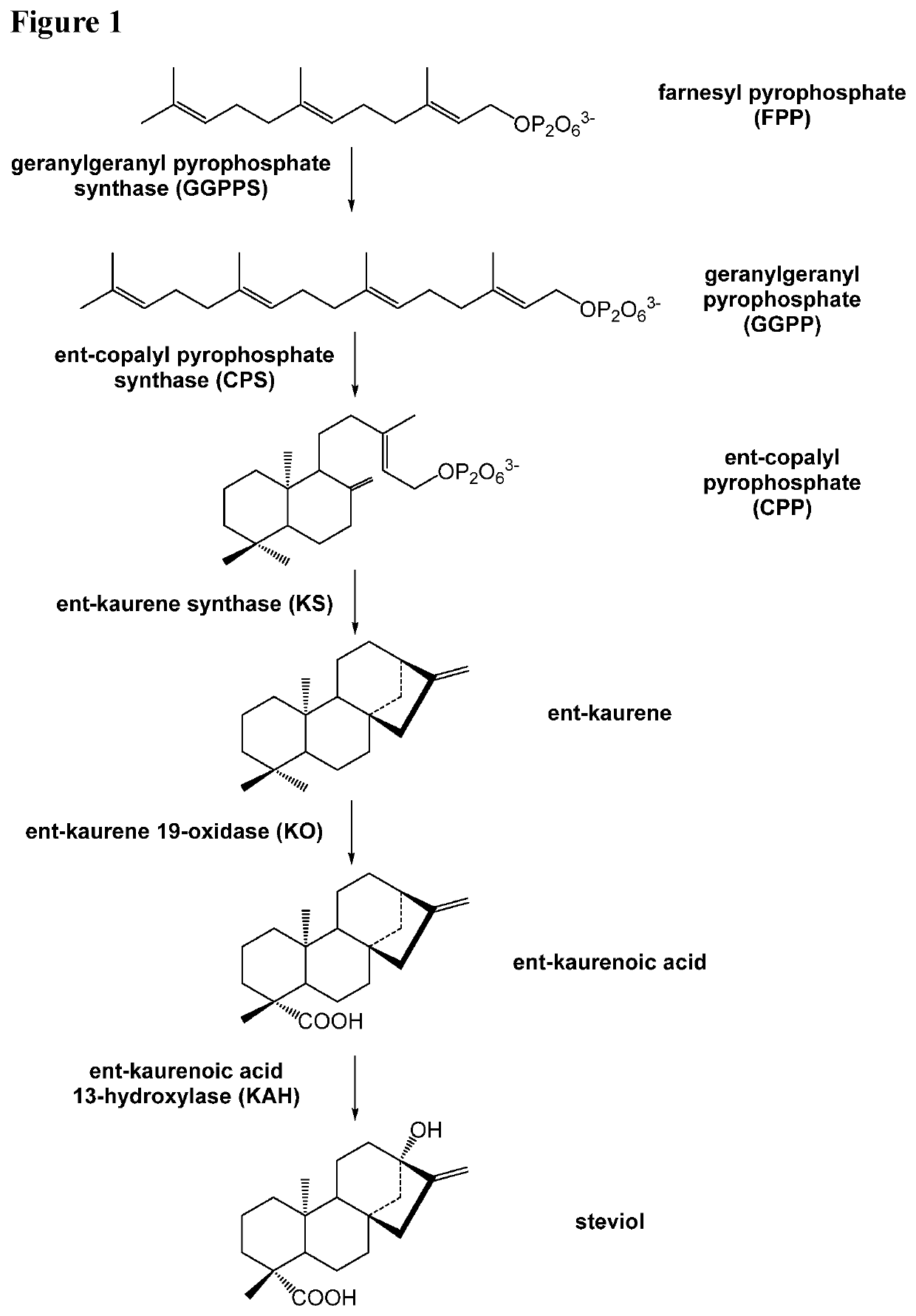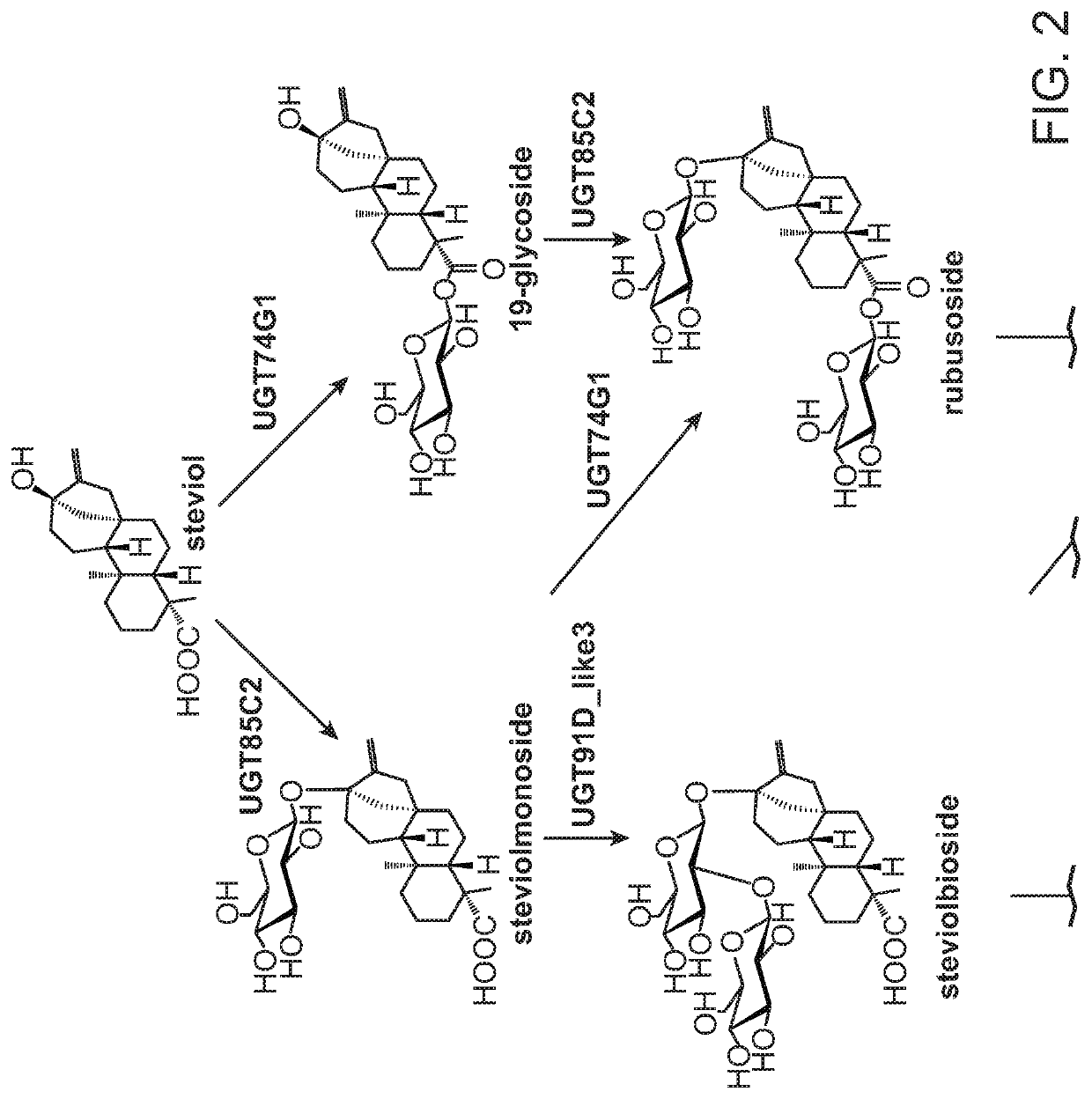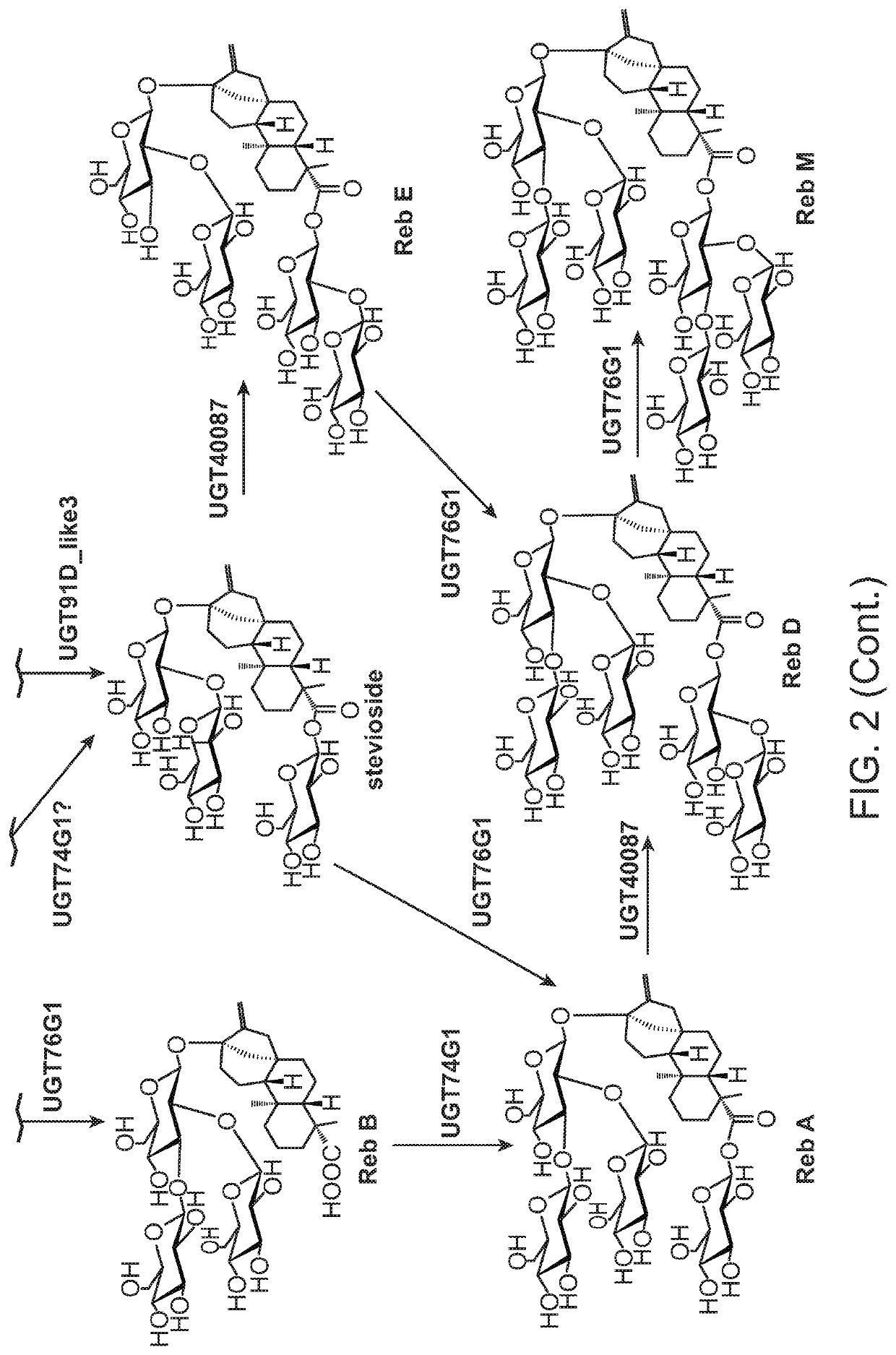Abc transporters for the high efficiency production of rebaudiosides
- Summary
- Abstract
- Description
- Claims
- Application Information
AI Technical Summary
Benefits of technology
Problems solved by technology
Method used
Image
Examples
example 1
nsformation Methods
[0215]Each DNA construct was integrated into Saccharomyces cerevisiae (CEN.PK2) using standard molecular biology techniques for an optimized lithium acetate transformation. Briefly, cells were grown overnight in yeast extract peptone dextrose (YPD) media at 30° C. with shaking (200 rpm), diluted to an OD600 of 0.1 in 100 mL YPD, and grown to an OD600 of 0.6-0.8. For each transformation, 5 mL of culture was harvested by centrifugation, washed in 5 mL of sterile water, spun down again, resuspended in 1 mL of 100 mM lithium acetate, and transferred to a microcentrifuge tube. Cells were spun down (13,000× g) for 30 seconds, the supernatant was removed, and the cells were resuspended in a transformation mix consisting of 240 μL 50% PEG, 36 μL 1 M lithium acetate, 10 μL boiled salmon sperm DNA, and 74 μL of donor DNA. The donor DNA included a plasmid carrying the F-CphI endonuclease gene expressed under the yeast TDH3 promoter for expression (see Example 4). Following a...
example 2
n of a Base Yeast Strain Capable of High Flux to Farnesylpyrophosphate (FPP) and the Isoprenoid Farnesene
[0216]A farnesene production strain was created from a wild-type Saccharomyces cerevisiae strain (CEN.PK2) by expressing the genes of the mevalonate pathway under the control of GAL1 or GAL10 promoters. This strain comprised the following chromosomally integrated mevalonate pathway genes from S. cerevisiae: acetyl-CoA thiolase, HMG-CoA synthase, HMG-CoA reductase, mevalonate kinase, phosphomevalonate kinase, mevalonate pyrophosphate decarboxylase, and IPP:DMAPP isomerase. In addition, the strain contained multiple copies of farnesene synthase from Artemisia annua, also under the control of either GAL1 or GAL10 promoters. All heterologous genes described herein were codon optimized using publicly available or other suitable algorithms. The strain also contained a deletion of the GAL80 gene, and the ERGS gene encoding squalene synthase was downregulated by replacing the native prom...
example 3
n of a Base Yeast Strain Capable of High Flux to Reb M
[0217]FIG. 1 shows an exemplary biosynthetic pathway from FPP to steviol. FIG. 2 shows an exemplary biosynthetic pathway from steviol to the glycoside Reb M. To convert the farnesene base strain described above to have high flux to the C20 isoprenoid kaurene, four copies of a geranylgeranylpyrophosphate synthase (GGPPS) were integrated into the genome, followed by two copies of a copalyldiphosphate synthase and a single copy of a kaurene synthase. At this point all copies of farnesene synthase were removed from the strain. Once the new strain was confirmed to make ent-kaurene, the remaining genes for converting ent-kaurene to Reb M were inserted into the genome. Table 1 lists all genes and promoters used to convert FPP to Reb M. Each gene after kaurene synthase was integrated as a single copy, except for the Sr.KAH enzyme for which two gene copies were integrated. The strain containing all genes described in Table 1 primarily pro...
PUM
| Property | Measurement | Unit |
|---|---|---|
| Fraction | aaaaa | aaaaa |
| Fraction | aaaaa | aaaaa |
Abstract
Description
Claims
Application Information
 Login to View More
Login to View More - R&D
- Intellectual Property
- Life Sciences
- Materials
- Tech Scout
- Unparalleled Data Quality
- Higher Quality Content
- 60% Fewer Hallucinations
Browse by: Latest US Patents, China's latest patents, Technical Efficacy Thesaurus, Application Domain, Technology Topic, Popular Technical Reports.
© 2025 PatSnap. All rights reserved.Legal|Privacy policy|Modern Slavery Act Transparency Statement|Sitemap|About US| Contact US: help@patsnap.com



